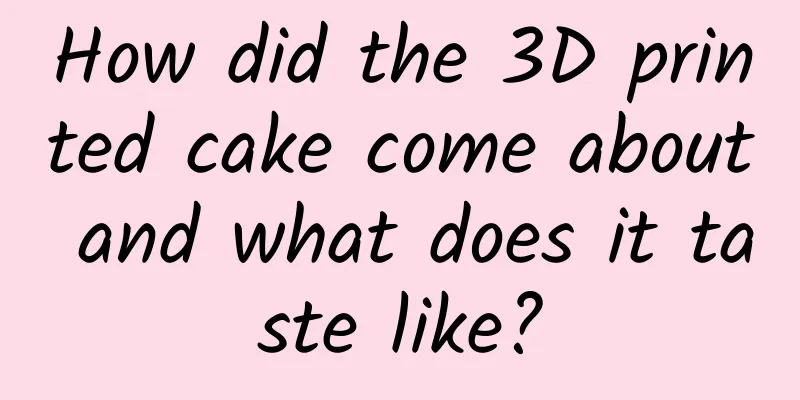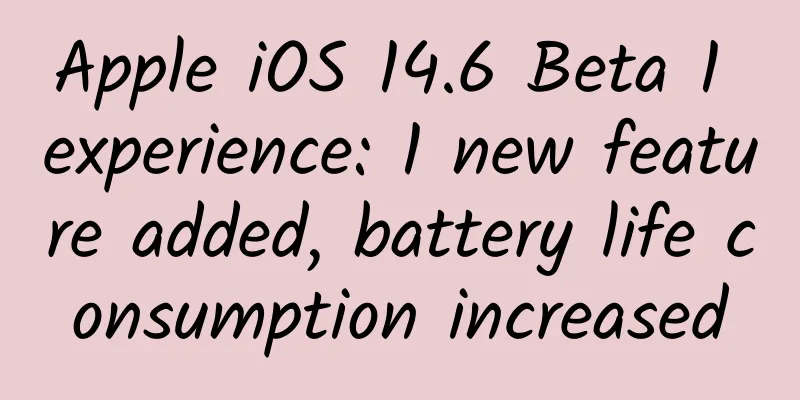How did the 3D printed cake come about and what does it taste like?

|
Cake is an ancient Western pastry, usually made in an oven. It is very popular among young people because of its tenderness, sweetness, fragrance and softness. Can you imagine that one day, the cake in your hand may be 3D printed? What is 3D printing The so-called 3D printing is actually the technology of three-dimensional printing. This technology is similar to traditional printing technology. Both require the use of a printer, while 3D printing uses a three-dimensional printer. Unlike traditional printing, due to the need for three-dimensional configuration, a three-dimensional model must be created in advance using computer-aided design software, and then the raw materials are loaded into the fuselage. Through computer control, the raw materials are accumulated layer by layer using a laser injector, and finally the blueprint on the computer is turned into a physical object. During the entire process, the computer automatically calculates the size and position of each step to ensure the accuracy of the manufactured object. At present, this technology has been applied to manufacturing, construction, aerospace and other fields, and has also been tried in the field of food processing. On March 21, the journal npj Food Science published an article describing the process of making 3D cakes. The research team from Columbia University in the United States first designed a cake model on a computer and accurately calculated the amount of different ingredients. Then they made a variety of cheesecakes using whole-wheat cookies, peanut butter, Nutella chocolate sauce, banana puree, strawberry jam, cherry sauce and icing as raw materials. Are there any restrictions on ingredients for making cakes ? In principle, the process of 3D printing cakes is somewhat similar to that of building. The building structure needs to apply the principles of mechanics, and the foundation must be stable. Whole-wheat biscuits are used as the base ingredients of each layer of the cake, and peanut butter and Nutella are used as supporting layers to form pits to accommodate softer ingredients such as bananas and jam. At present, although 3D printing technology is good, not all ingredients can be applied to cake processing. Generally speaking, the raw materials used for 3D printing must be in a paste or semi-liquid state. This means that the various materials must be minced, mixed, concentrated into a slurry, and then loaded into a syringe, and the materials will be heated into a formable shape. Commonly used ingredients include vegetable puree, batter, biscuits, cheese and candy, jelly, frosting, chocolate and fruit puree, etc. Of course, bean protein, bacterial protein, and plant-based artificial meat can also be used with this technology. The fruit and nut cakes we usually eat require placing whole or chopped fresh fruits and nuts during the cake making process, which cannot be achieved through 3D technology. Image from Tuchong.com Moreover, 3D printers cannot directly cook food. If the raw materials used are cold, the food needs to be heated and cooked after printing. Therefore, this method is not suitable for ingredients that are not resistant to heating. What are the advantages of 3D printed cakes? 3D printing technology still has outstanding technical advantages in food processing. First, it can be tailor-made. Because the amount of ingredients can be used accurately, the diversity and quantity of nutrition, vitamins and calories in the cake can be controlled. 3D printed food can be accurately matched and balanced. By changing the program and raw materials, cakes with different tastes, textures, flavors and shapes can be printed. Second, it simplifies and makes it easier to reproduce. 3D printing can create complex shapes that are either impossible to replicate manually or require a lot of time. Sharing recipes is as simple as transferring digital files over the Internet. All that is needed is the same raw materials, printing settings, and compatible printing equipment. In other words, the same food can be produced in batches without incurring additional costs to achieve mass production. Third, the entire operation process is mostly done by printer operation, which reduces labor costs and also reduces the risk of transmission of foodborne infectious diseases. I believe that in the future, 3D printing technology will be applied to more food processing processes. Who knows, one day you will be able to taste it yourself to see if the taste is different. This article is a work supported by Science Popularization China Starry Sky Project Author: Zhang Yu Reviewer: Wu Huaiyu (Researcher at the Institute of Automation, Chinese Academy of Sciences) Produced by: China Association for Science and Technology Department of Science Popularization Producer: China Science and Technology Press Co., Ltd., Beijing Zhongke Xinghe Culture Media Co., Ltd. |
<<: Want a little patch of moss? Make your own!
>>: Help with the college entrance examination! Pu Pu takes you through the hot events in aerospace
Recommend
Why is the conversion rate of WeChat Guangdiantong advertising so low?
WeChat Guangdiantong advertising : //www.opp2.com...
Alien technology tower? Oh, it turns out to be a man-made solar thermal power station
Produced by: Science Popularization China Author:...
Singapore Land Transport Authority: BYD will become the annual sales champion of Singapore's automakers for the first time in 2024 with 6,191 registrations
According to statistics released by the Land Tran...
When will wearable devices become truly popular?
If you often pay attention to the trends in the f...
How to recall users? Reviewing the 5 major strategies will teach you how to return scientifically!
The biggest headache for many operations colleagu...
Douyin marketing plan and advertising number selection strategy
In the past three years, I have managed the entir...
Christmas and New Year's Day marketing plan (attached with download)
Christmas and New Year's Day are important fe...
How can the maternal and infant community APP products make good plans for the new year?
This task is usually led by the product director ...
New regulations on supplementary social security payments for rural veterans in 2022: Can they be supplemented? How to make up for it?
Being a soldier is a glorious profession and they...
I reviewed the App Store’s visual changes over the past decade to tell you how design trends have evolved!
There are a lot of design trend analyses on the I...
A famous female star revealed that she has "calcification". This phenomenon occurs to many people! Learn how to deal with and prevent it in one article
Recently, the topic of a famous female star's...
China Automobile Dealers Association: In-depth analysis of the national used car market in April 2024
1. Market Overview in April 2024 Monthly transact...
APP paid delivery settlement methods and channels
This article mainly discusses the key delivery in...
Tim Draper, the most powerful investor: Capital winter is just an exaggeration
[[154628]] In today's star-studded Silicon Va...
Why the stock price plummeted: Lenovo has fallen into the pain period of profit transformation
Recently, Lenovo released its interim financial r...









